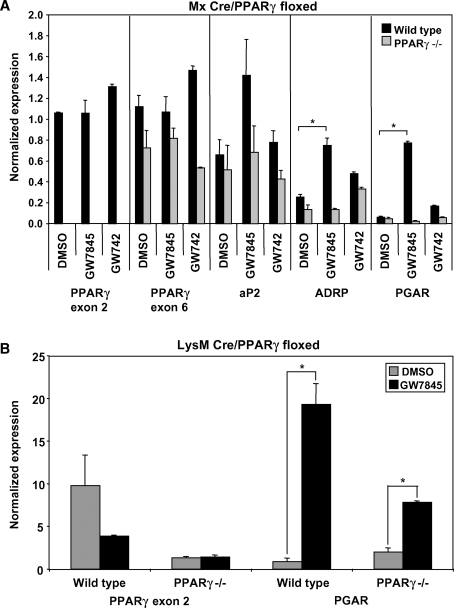Fig. 1.
Induction of the Mx promoter effectively disrupts PPARγ, whereas LysM Cre cannot efficiently delete PPARγ exon 2. Cells were harvested and pooled from three to five mice per group. The presented data are representative of at least three independent experiments. A: Thioglycollate-elicited wild-type and Mx Cre PPARγ−/− peritoneal macrophages were treated with PPARγ or PPARδ ligands (GW7845 or GD742, respectively; 100 nM each) overnight. PPARγ exon 2 could not be detected in PPARγ−/− cells (P < 0.005), whereas PPARγ exon 6 expression was unaffected. Known PPARγ target genes (aP2, ADRP, and PGAR) were tested to confirm loss of ligand response in PPARγ−/− macrophages. B: Thioglycollate-elicited wild-type and LysM Cre PPARγ−/− peritoneal macrophages were treated with PPARγ ligand (GW7845; 100 nM) overnight. PPARγ exon 2 could still be detected in PPARγ−/− macrophages, and PGAR, a known PPARγ target gene, could still be induced by PPARγ ligand in these cells (P < 0.02). Error bars represent SEM.

